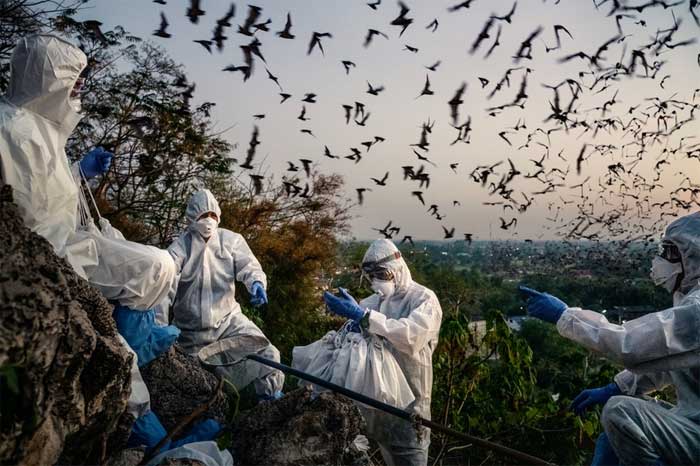Every year, hundreds of thousands of people in China and Southeast Asia are infected with various types of coronaviruses related to SARS-CoV-2, which causes the Covid-19 pandemic. This phenomenon reveals the risk of a new pandemic caused by coronaviruses that could erupt at any time, according to a Bloomberg article.
Imminent Threat
Research conducted by scientists from the National University of Singapore and the non-governmental organization EcoHealth Alliance indicates that approximately 400,000 people are infected with coronaviruses related to SARS-CoV-2 each year.
The virus is transmitted to humans through contact with animal species. Most infections go undetected because infected individuals exhibit only mild symptoms or none at all, and the virus does not easily spread between humans.
However, the more people infected with the virus, the greater the risk of the virus mutating and developing the ability to spread between humans, potentially leading to another pandemic similar to Covid-19.
The question of where and how the SARS-CoV-2 virus sparked the outbreak continues to be a topic of debate. It remains inconclusive whether the virus originated from natural sources or elsewhere.

Scientists indicate that people living near bat colonies are at particularly high risk of virus infection. (Image: Business Insider).
One study, supported by the U.S. National Institute of Allergy and Infectious Diseases, focuses on evidence that bats are the primary hosts of viruses similar to SARS-CoV-2, showing that people living near their roosts are at particularly high risk of infection.
Edward Holmes, a professor of evolutionary biology at the University of Sydney, argues that in a context where humans continuously come into contact with coronaviruses, a pandemic will erupt when the necessary conditions are met.
Dozens of bat species that can carry coronaviruses inhabit a vast geographical area in Asia. The regions considered to be at the highest risk include southern China and several Southeast Asian countries.
At EcoHealth Alliance, Peter Daszak and his colleagues use ecological and epidemiological models and data to calculate the risk of infection from viruses similar to SARS, as well as the rate of unreported bat-to-human virus infections in China, South Asia, and Southeast Asia.
According to scientists, this method lays the conceptual groundwork for a systematic risk assessment of viral spillover events from wildlife to humans.
At the same time, it helps identify key geographical areas that need to be prioritized for targeted surveillance of wildlife, poultry, and humans.
“Given the challenges in determining the origins of Covid-19 and how the SARS-CoV-2 virus transmits to humans, this method could support research efforts to identify the location where the first infections occurred,” scientists stated.
Intermediate Animals
It has been nearly two years since the first Covid-19 cases were recorded in Wuhan, China. To date, the scientific community has been unable to determine the origins of the outbreak.
Mr. Daszak, a proponent of the natural origin hypothesis, is among those criticized for collaborating with the Wuhan Institute of Virology on a study suspected of potentially creating a precursor virus to SARS-CoV-2.
So far, there is no credible evidence supporting the hypothesis that the virus escaped from a laboratory. Last month, the U.S. intelligence community dismissed the possibility that SARS-CoV-2 was developed for use as a biological weapon.
However, U.S. intelligence agencies do not agree on the origins of the virus.
According to Mr. Daszak’s research, approximately 50,000 events of bat-to-human virus transmission occur annually in Southeast Asia. However, the actual number could be in the millions.

Bats are among the animals capable of transmitting viruses to humans. (Image: New York Times).
The high number of wildlife-to-human virus transmission cases indicates that the risk of infection from nature is much greater than the risk from laboratories.
“And that’s just bats. The risk of transmission is even higher when considering all animal species that could serve as potential intermediate hosts,” Professor Edward Holmes noted.
According to the research, potential intermediate hosts include civets, ferrets, and other animals that are commonly farmed for business in Asia.
In China alone, 14 million people worked in the wildlife farming industry in 2016.
In Asia, approximately 478 million people live in regions that are home to bat species carrying coronaviruses, the study indicates.


















































